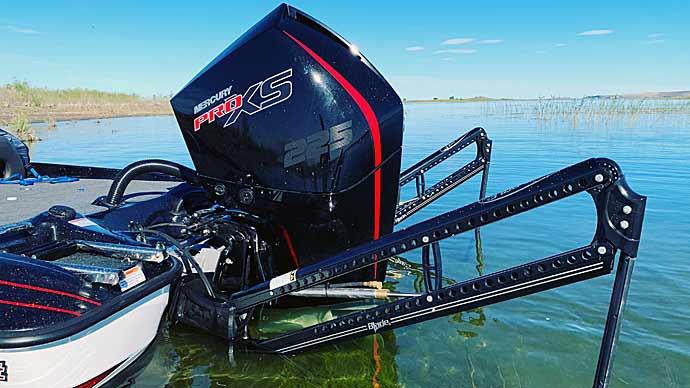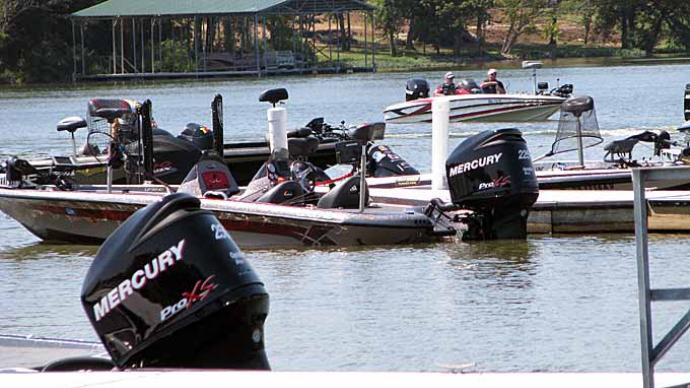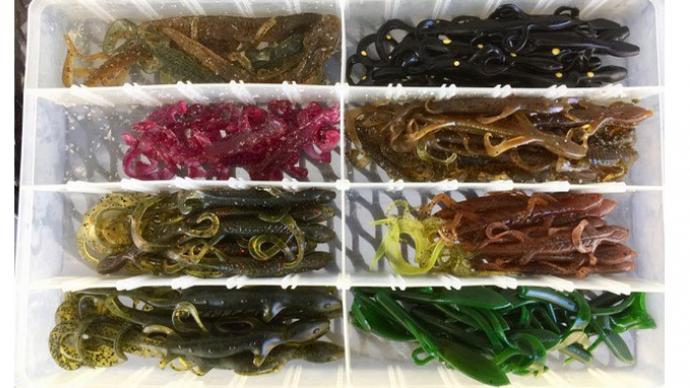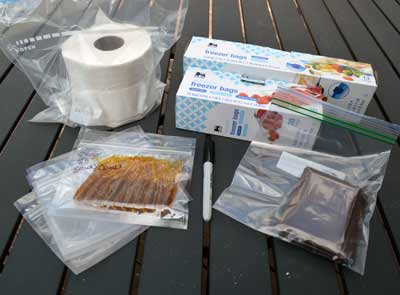
When it’s time to head to the lake, it can be challenging to think of anything beyond where you’ll make your first cast and the feel of the first bite. That’s especially true if you’ve waited through months of snow and ice to start your fishing season.
But preparing to hit the water in your boat and ensuring a fun and successful outing requires more thought and preparation. So when you're hitching your boat to your tow vehicle, these seven items aren't top of mind. But when push comes to shove, you’ll be glad they’re with you. Each has the potential to save your day, possibly more.
-
New lures
One highlight of each new season is the opportunity to put recently purchased lures to work. They looked like bass-catchers in the store, so now it’s time to see what they can do on the water.
In a rush to get to the lake, throwing the entire shopping bag in your boat may seem more efficient. But that will cost you precious on-the-water time in the long run. So, spend time removing lures from their packages and examining them before you go fishing. Do the hooks need sharpening, replacing, or enlarging? Does it need a split ring or snap? Is the skirt too long? Is the line tie clear of paint or clear coat? Once you have addressed these needs, put them in the appropriate tackle box, bag, or compartment, so you'll know exactly where to find them. Few things are more frustrating than hunting for a specific lure while a hot bite is underway.
-
Resealable plastic bags
What do you do with those new soft-plastic lures that you just opened but didn’t come in a resealable bag? You put them in one that you packed.
Resealable bags have a million uses in your boat. In addition to corralling soft-plastic lures and the scent and oil they're packed in, they can protect essential items, such as your wallet, from becoming waterlogged during a passing rain shower or running through rough water. And you can use one to collect trash, such as pieces of line, worn-out lures, and snack wrappers. Finally, you always want to leave fishing holes better than you found them.
Go for the freezer-style bags. They’re constructed of thicker plastic than ones labeled for storage. That makes them more durable. And look for ones whose seals are pinched closed. While sliders are easier to open and close, their “zippers” can pull open, especially after much use.
Pack a permanent marker, too. Use it to write the brand, size, and color of the soft-plastic lures you place inside a bag. Then, you'll know what to re-order when they become the hot bait.
-
Safety gear
The safety items required to carry on board are based on your vessel and where you’re boating. The bigger the water and boat, the more you need. FOR EXAMPLE, the U.S. Coast Guard requires flares on waters it patrols, but they aren’t required on most inland waters. So, review online boating resources at the federal, state, and local levels before launching.
Image
While the inconvenience of a sunburn can be fleeting, its damage can become more dangerous over time. So, ensure you’re protected by packing and using sunscreen and protective clothing while on your boat. Photo by Pete M. Anderson Some commonly required safety items include a sound-making device, a whistle or horn, a throwable floatation device, an appropriate PFD for everyone on board, a distress flag, and an anchor.
You'll need a fire extinguisher, too, governed by U.S. Coast Guard regulations. They were updated in April 2022. According to the BoatUS Foundation, you must replace all fire extinguishers 12 years after manufacture. If your boat is a 2018 model year or newer, you'll need the appropriate number of 5-B, 10-B, or 20-B extinguishers for your boat's size. B-I and B-II extinguishers are no longer acceptable. If your boat is a 2017 model year or older, serviceable B-I and B-II extinguishers are still OK.
Required safety items must be in working order and easily accessible, too. That will save you from a ticket if law enforcement stops you. But more importantly, it ensures you're ready for an emergency. Unfortunately, when they happen, there usually isn't time for do-overs.
You won’t think twice about packing your smartphone, whose camera and weather apps have become a big part of everyday fishing. But if its battery is dead, it’ll be useless when you need to call for help. So, create a way to charge it while you’re on the water, whether wiring in a plug or purchasing an adapter and cable. Then, leave those in the boat, preferably protected inside one of your resealable bags.
-
Comfort items
The typical fishing day isn’t a short affair. You launch as the sun rises and load when it sets, maximizing your time on the water. But your marathon fishing sessions don’t have to feel like you ran 26.2 miles. Pack some items to make your day more enjoyable.
The most significant boosts are food and drink. While you may think skipping both is a better use of your time, especially during tournaments, they are an investment. You'll make better decisions to cover more water and fish more efficiently when fed and hydrated.
You don’t have to bring a three-course meal. Sandwiches cut into easy-to-eat pieces that can be consumed while running between spots are good. Pieces of fruit or vegetables are good, too. A couple of cookies or sandwich crackers can help you finish the day, whether casting for cash or enjoying a day of fun fishing. And you can't beat plenty of water to drink.
Keep a roll or two of toilet paper in a resealable bag. You may need it. Your fishing buddy may ask for it. You can use it to clean up the Vienna sausage juice you dribbled on the deck. You’ll be relieved knowing it's there even if you never need it.
-
Sunscreen
Sunburns can sneak up on you. And while their redness and stinging will subside within a few days, they can leave lasting effects, including more significant and insidious problems — skin cancer — later in life. So, cut it off at the pass by religiously slathering yourself with sunscreen.
Choose a waterproof lotion with a high SPF rating. Apply it first thing in the morning, and keep a bottle in your boat so you can re-apply it regularly during the day. Use it even with wearable sun protection — scarf, hat, gloves, long-sleeve shirt, and pants. It never hurts to be prepared for a hat that blows off, sleeves that are rolled up, or pants exchanged for shorts.
-
Spare clothes
Boating season starts early in the year when the air temperature may feel warm, but the water temperature is at or near its coldest point of the year. In some places, it’s not long after the ice has melted. So it would be best if you were prepared for it.
Image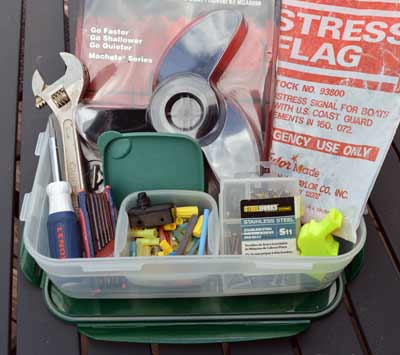
Minor items can become big heroes when issues arise while on the water. Bring a small box of odds and ends such as a spare drain plug, an assortment of screws and nuts, and wire connections. Photo by Pete M. Anderson Coldwater is no joke. The shock of falling into it can cause you to drown quickly. It doesn't take much longer for hypothermia to set in, sapping strength and turning fatal within an hour. So, wearing a life jacket is essential; it buys you time to climb out of the water and find a dry and warm spot. If traditional foam-filled personal floatation devices feel too bulky, wear an automatic inflatable PFD. Some states require PFDs worn by people in boats less than a certain length during the coldest months.
You'll need to get warm in a hurry if you fall in. The first step is changing into dry clothes. So, pack a complete spare set, including extra-thick socks and gloves.
You don’t have to fall in to feel cold. Spring winds turn cold when blowing across open water. So, even if it feels warm at home, it'll be colder on the lake. So, pack an extra jacket and sweatshirt. And bring your rain suit evening if the spring sun is shining brightly. It stops as much wind as rain, keeping you warm. Of course, you can always take it off if it's with you, but you can never put it on if you leave it at home.
-
Odds-and-ends box
Sometimes minor needs cause big problems. If you've ever driven any distance to go fishing only to realize your boat’s drain plug is still at home, you’re well-versed in the situation.
Assemble a small box of odds and ends that you may need to fix minor problems that could ruin your day on the water. Wire connections and shrink wrap; a small pad of waterproof paper and pencil — pen ink can smear when wet; assorted small screws, bolts, washers, nuts, cotter pins, spare kill-switch cord, and a spare drain plug are a good start. Bring a few tools, including a multibit screwdriver, pliers, and adjustable wrench. Also, a small set of hex keys and a handful of zip ties are good.
Keep these items in a small resealable plastic box, like those used for food storage. It'll take up only a tiny corner of one compartment.


